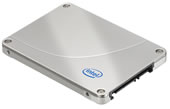
Find out why we recommend solid state hard drives for ultimate computer performance.
Solid State hard drives have been around for a while now however there is still not a great understanding of the benefits of using them in PC builds amongst many of our customers.
What is a Solid State Drive?
An SSD is basically a storage device similar to a standard hard drive or a flash memory card which holds data.
The difference between a SSD and a traditional hard drive is how it stores the data. Traditional drives have magnetic platters to store data and use a spindle, similar to an old record player, to read the data from the platters.
In an SSD the data is stored in microchips which greatly increases the rate at which reading and writing data to the drive occurs.
The Benefits of SSD
The use of microchips to store data has a few benefits over the more traditional magnetic storage solutions.
- Much faster data access times meaning data is read from the disk almost 3 times quicker than using a standard hard drive
- Fewer moving parts means much quieter operational noise and greater reliability
- Ability to withstand drops and jolts
One of the main issues with solid state drives is the cost, they are far more expensive than traditional hard drives.
For example in larger drives you can be paying just 5p per gigabyte, for solid state drives the cost is more like £1.30 per gigabyte, a substantial difference.
Typical Setup Route
Due to this increased cost one of the best ways of utilising an SSD in a PC without breaking the bank in the process is to use a combination of an SSD and a traditional hard drive unit.
We recommend using an 80GB or 160GB SSD as your ‘C drive’ (boot drive) and installing your operating system and programs on it. Then install a larger and cheaper magnetic hard disk as a secondary drive for your larger file storage requirements.
This combination gives your operating system and programs the benefit of the massively increased read / write speeds of the SSD, and for larger file storage requirements such as photos, music or videos the traditional drive offers the space required.
Real World Performance
The most noticeable difference between 2 identical PC’s where one has an SSD boot drive and the other has a traditional hard disk boot drive is the speed difference in booting up the machine and running programs.
When you open a program (or boot up a computer) what is actually happening is that the program files are being read from the hard drive and placed in your computer’s RAM, the massive speed boost in reading the files given by the SSD makes booting up a PC and opening programs a much snappier process.
Often boot up times are cut in half and once logged in opening programs feels instant rather than the sometimes sluggish performance associated with computers that have just switched on.
Basically any computer process which involves reading data from the C drive will benefit from using an SSD making them a worthwhile addition to any performance PC.
Written by Darren @ Multiple Monitors
Last Updated: February, 2011